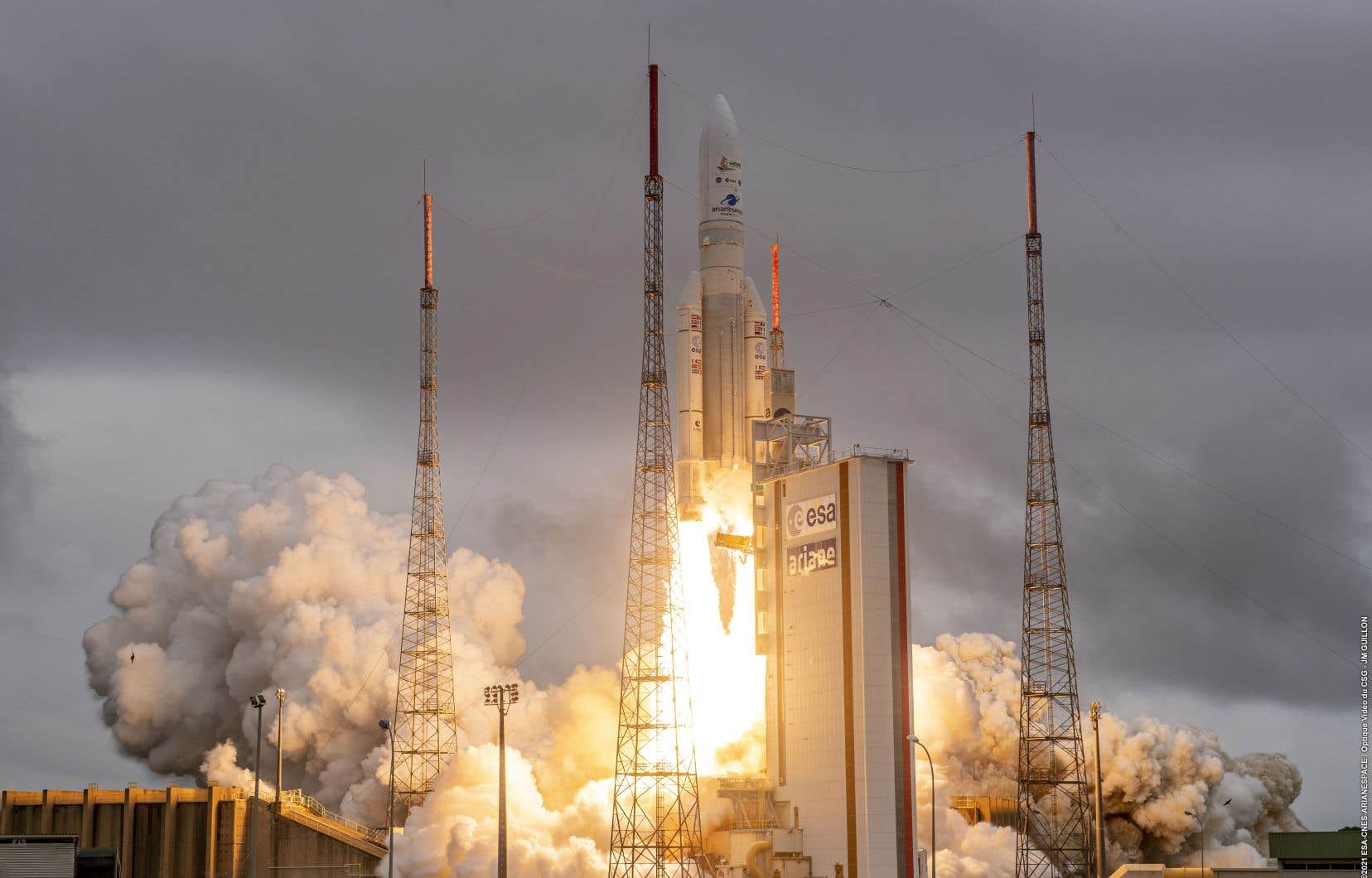As viewers around the world watched the launch of the rocket carrying the James Webb Space Telescope on Christmas morning, the Canadian scientists who played a pivotal role in its creation moved on.
The telescope, made by NASA, the Canadian Space Agency (CSA) and the European Space Agency, flew on Saturday from French Guiana on the northeastern coast of South America, aboard an Ariane rocket.
Astrophysicist Natalie Ollett, the telescope’s Canadian scientific coordinator, attended the much-anticipated launch party with her family.
“Seeing the telescope leave Earth…what a Christmas joy,” Owlette said in an interview on Saturday.
“I cried. We took a video to celebrate this moment. The launch went perfectly.”
The telescope will search for unprecedented detail of the first galaxies created after the Big Bang and the development of potentially life-friendly planets outside our solar system.
For Lisa Campbell, head of the Canadian Space Agency, the launch was the culmination of a 30-year dream.
“What an extraordinary day,” exclaimed Lisa Campbell.
It is the most powerful space observatory ever built. “
Canada Post
She said Canada has been working on the James Webb Space Telescope almost since the beginning and will be among the first countries to study its results.
“This is a new step in astronomy, in understanding the universe and our place in it,” the ASC president added.
These scientific discoveries will be made possible by Canada’s expertise in astronomy. “
At least half of the Canadian Astronomical Society’s 600 scientists helped create the telescope, and dozens of engineers are part of its design team.
Natalie Owlette notes that work on the telescope has just begun.
She said most people are familiar with the Hubble Space Telescope – which was launched in 1990 – but Webb should be 100 times more powerful.
“We often refer to Webb as Hubble’s successor,” she explained.
“Webb is much bigger, it captures more distant objects in low light and deepens the history of the universe.”
The $10 billion telescope has begun rushing toward its 1.6 million kilometer destination, more than four times beyond the moon. It will take a month to get there and another five months before his infrared eyes are ready to begin scanning the universe.
To achieve this, the telescope will use a precision-guided detector (FGS) and a non-slit imager and the near-infrared spectrometer (NIRISS), an instrument that will allow astronomers to observe distant galaxies and study the atmospheres of exoplanets.
Both of these tools are designed and built in Canada.
“We are the eyes of the telescope, Canadian eyes that allow all the observations,” said Natalie Owlette. Canada has never been involved at this level in this type of project.”
Innovation Minister François-Philippe Champagne issued a statement congratulating the Canadian expertise, saying previous investments in space technologies had enabled the country to be an “active partner in this exciting mission.”
“Once again, the Canadian space sector is pushing the boundaries of science and, most importantly, astronomy,” said Mr. Champagne. “The Webb Telescope is the largest science space mission in the 60 years of the Canadian Space Program.”
We are the eyes of the telescope, it is the Canadian eyes that allow all observations.
For Daryl Haggard, professor of physics at McGill University in Montreal and research associate of the James Webb Space Telescope, the device is an undeniable source of pride.
“We were watching the launch video, and my husband was pointing out that he could see the NASA logo, as well as the Canadian Space Agency, right there on the rocket,” she said in a choppy voice. because of emotion.
“It is very cool.”
Daryl Haggard said she hopes the project will put Canada on the map for its astronomical expertise.
People generally refer to the Canadian Space Force, she said, but the country does much more than that. The robotic arm has been involved in US space shuttle missions for nearly 30 years, starting in 1981.
In exchange for its contribution to the telescope, Canada is guaranteed to have at least five percent of the telescope’s observation time, once data starts arriving in about six months.
Lisa Campbell said this will allow Canadian scientists to continue their studies of exoplanets and black holes, among other things.
“We will be able to see the phenomena at the origin of the creation and history of our universe,” she said.
“We often wonder why we explore space, but that will tell us a lot.”
In association with The Associated Press and Bob Weber in Edmonton
Watch the video

“Proud thinker. Tv fanatic. Communicator. Evil student. Food junkie. Passionate coffee geek. Award-winning alcohol advocate.”


